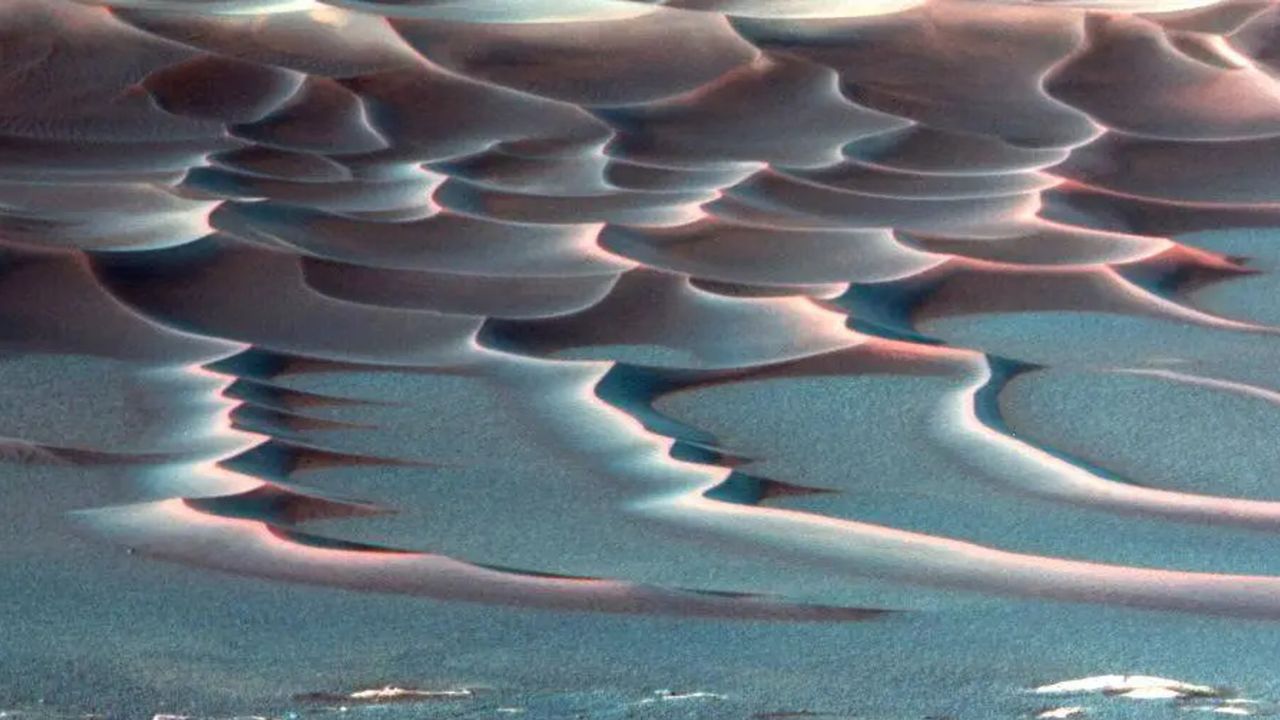An innovative technique developed by researchers at the State University of Campinas in Brazil offers new insights into how winds have shaped the surface of Mars. This method measures the forces acting on individual grains of sand, potentially revealing the planet’s environmental history. By combining laboratory experiments, computer simulations, and artificial intelligence (AI), the team has created detailed force maps that illustrate the physics behind dune formation.
Dunes, particularly the crescent-shaped “barchan” dunes, form wherever wind or water interacts with loose sand. These formations can be found in diverse environments, from Earth’s deserts to the sandy plains of Mars. Understanding their movement allows scientists to infer prevailing wind patterns and historical environmental conditions. Until now, measuring the forces that drive the motion of each grain was a significant challenge.
Researchers explained, “To measure the force acting on each grain, you’d need to place a tiny accelerometer on each one, which simply doesn’t exist.” To address this limitation, the team recreated miniature underwater dunes in a controlled laboratory setting and conducted comprehensive 3D simulations to calculate the forces on each grain.
The researchers trained a convolutional neural network, a type of AI used for image recognition, to connect dune images with the corresponding force maps derived from their simulations. Once trained, the AI could analyze new dune images and accurately predict the forces acting on them, even for shapes that had not been previously encountered.
Renato Miotto, a postdoctoral researcher and lead author of the study, stated, “Any granular system that can be seen in an image—whether ice, salt, or synthetic particles—can be analyzed as long as there’s a simulation capable of accurately reproducing the behavior of the material.”
The implications of this technique extend beyond Mars. On Earth, it could enhance engineers’ capabilities to predict coastal erosion, river sediment transport, and the behavior of granular materials in various industrial applications. The method also holds promise for analyzing other planets captured in orbital images, as the physics governing dune formation remains consistent across different environments.
In the context of Mars, the research allows scientists to infer the intensity of past winds and predict the future evolution of its dunes based on widely available images. Erick Franklin, a professor and co-author of the study, remarked, “This method offers a new window into studying the Red Planet’s atmospheric history and surface evolution.”
The team’s findings were published on August 1, 2023, in the journal Geophysical Research Letters. By leveraging advanced technology and innovative methodologies, this research paves the way for a deeper understanding of Martian geology and the dynamic processes that have shaped its landscape.
